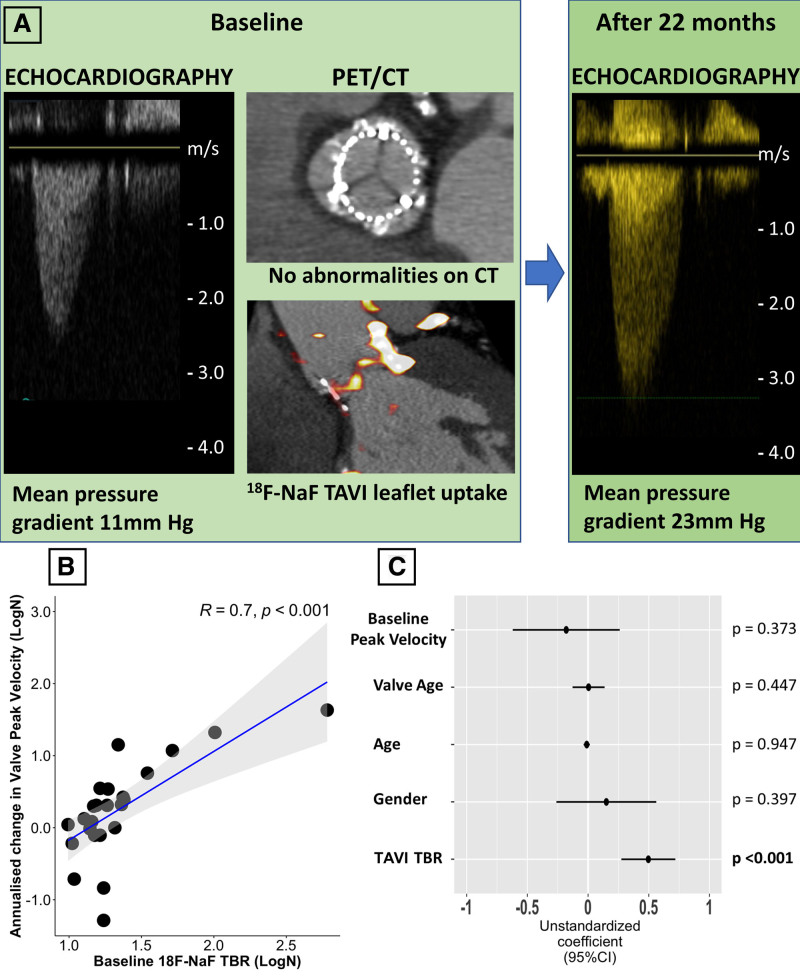Figure 4.
Baseline 18F-sodium fluoride uptake predicts subsequent deterioration in TAVI function. A, Case example of an 84-year-old patient imaged 5 years after transcatheter aortic valve implantation (TAVI). We detected TAVI 18F-sodium fluoride (18F-NaF) leaflet uptake in the absence of abnormalities on echocardiography (mean pressure gradient 11 mm Hg) and computed tomography (CT). At follow-up, the patient developed moderate bioprosthesis stenosis with a mean pressure gradient of 23 mm Hg. B, A strong correlation was observed between baseline 18F-NaF uptake in the TAVI valves (TBR) and subsequent progression in bioprosthetic valve peak velocity (r=0.7; P<0.001). C, Forest plot of unstandardized coefficients (95% CIs) from a multivariable linear regression analysis predicting change in TAVI valve function (annualized change in peak velocity) during follow-up. When examining all relevant baseline characteristics, 18F-NaF uptake was the only independent predictor of hemodynamic TAVI deterioration. PET indicates positron emission tomography; and TBR, target-to-background ratio.

